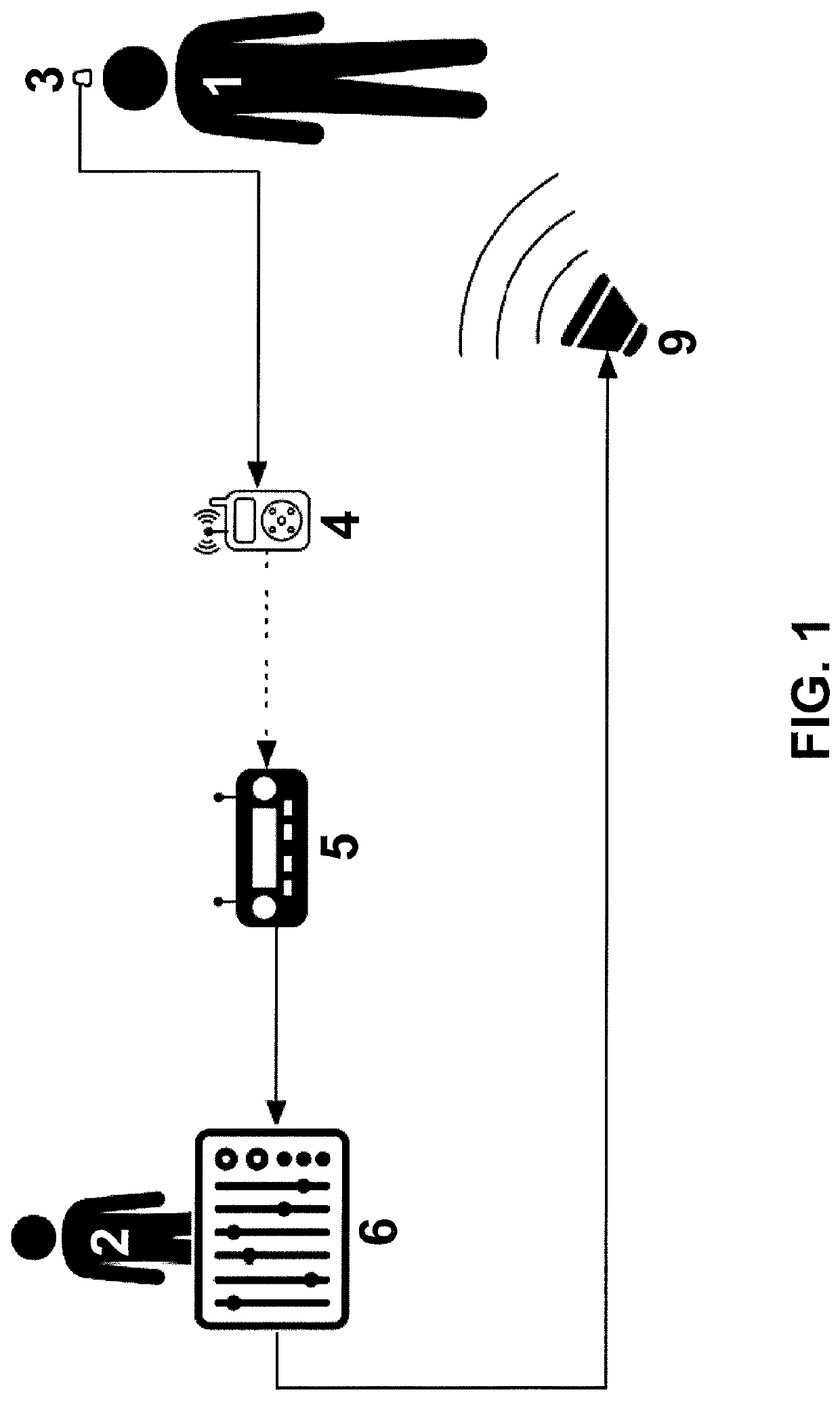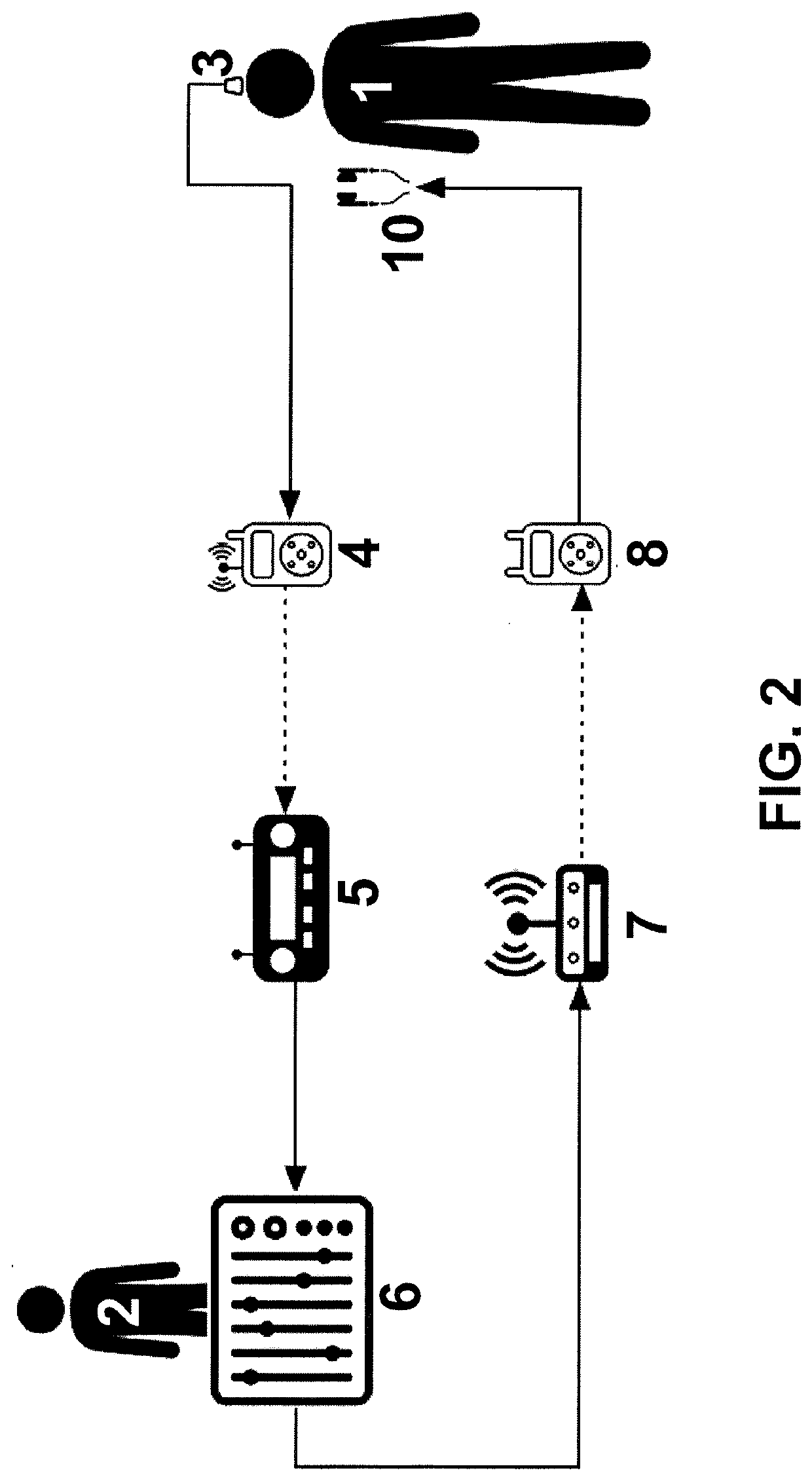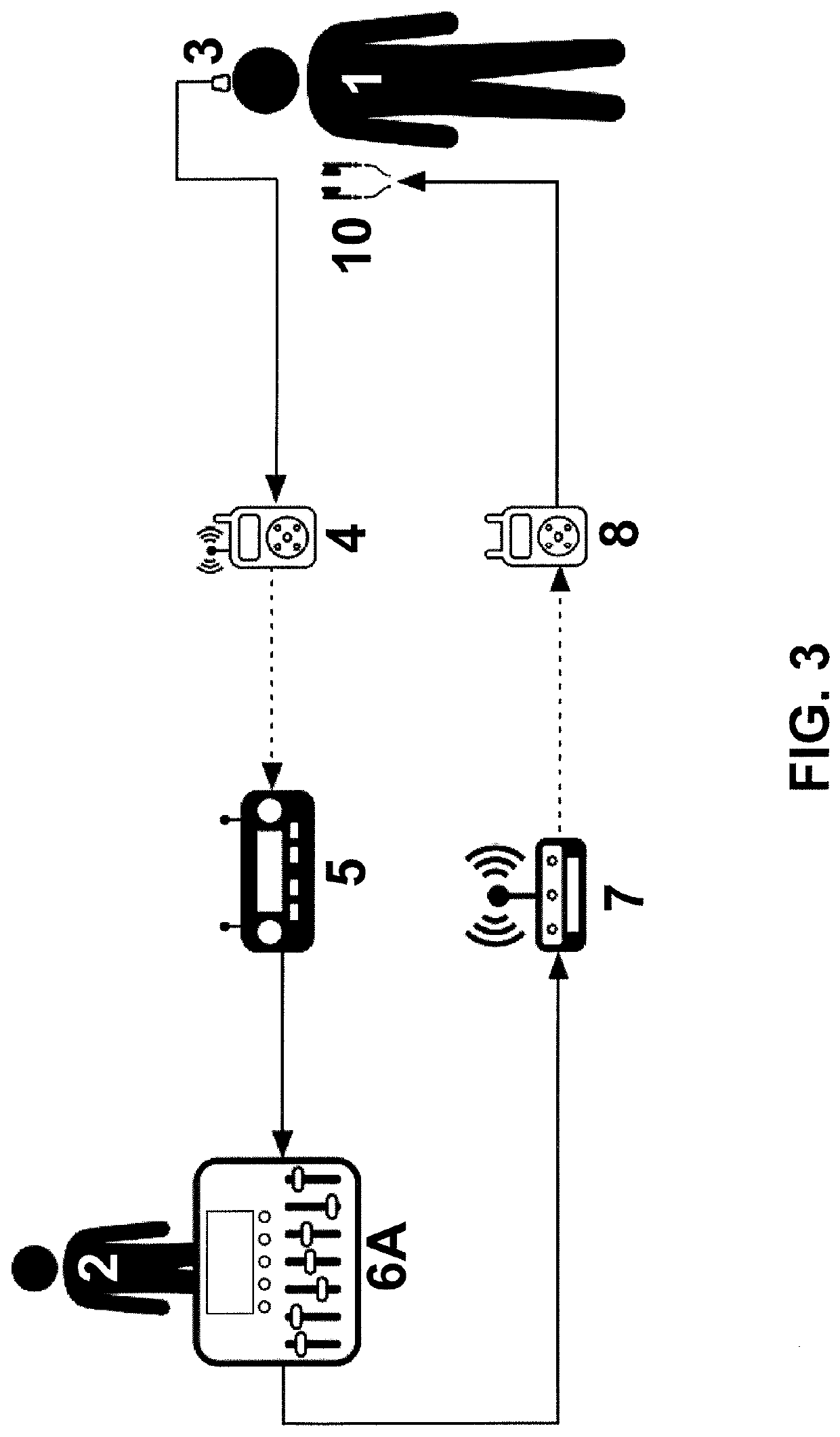Sound quality enhancement system and device
a technology of sound quality enhancement and enhancement system, applied in the direction of electrical transducers, low frequency amplifiers, gain control, etc., can solve the problems of increasing system participants, inability to solve problems, and inability to maintain latency, so as to achieve the effect of maintaining latency
- Summary
- Abstract
- Description
- Claims
- Application Information
AI Technical Summary
Benefits of technology
Problems solved by technology
Method used
Image
Examples
Embodiment Construction
[0036]In an exemplary embodiment of the invention, a circuit may be employed to eliminate all latency in the system by amplifying the sound signal and returning it directly to the performer's ears entirely in the analog domain. Consequently, signal degradation may be substantially eliminated and the need for additional equipment—analog or digital—is obviated. A further benefit according to this exemplary embodiment is the removal of any additional monitor / controller 2 from the system.
[0037]Referring to the illustrative embodiment of FIG. 6, the sound source 1 may use a sound input mechanism 3 to transmit sound to an analog / digital transmitter 4 / 4A to be received by an analog / digital receiver 5 / 5A. Before transmission to analog / digital transmitter 4 / 4A, the signal is received by a sound enhancement circuit, which may be exemplified by one or more of the embodiments related to or describing such an enhancement circuit 100, enhancement circuit 200, or their combinations and / or equivale...
PUM
 Login to View More
Login to View More Abstract
Description
Claims
Application Information
 Login to View More
Login to View More - R&D
- Intellectual Property
- Life Sciences
- Materials
- Tech Scout
- Unparalleled Data Quality
- Higher Quality Content
- 60% Fewer Hallucinations
Browse by: Latest US Patents, China's latest patents, Technical Efficacy Thesaurus, Application Domain, Technology Topic, Popular Technical Reports.
© 2025 PatSnap. All rights reserved.Legal|Privacy policy|Modern Slavery Act Transparency Statement|Sitemap|About US| Contact US: help@patsnap.com



